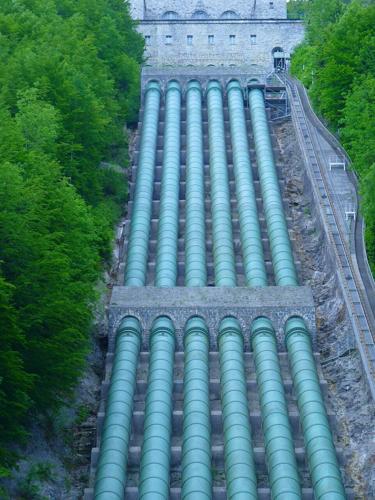Flue pipes play a crucial role in the safe and efficient operation of heating systems, fireplaces, and other appliances that utilize combustion. Proper design and installation of flue pipes are essential to ensure optimal performance, safety, and compliance with regulations. In this comprehensive guide, we will delve into the fundamental principles of flue pipe design and installation, covering everything from the fundamentals to advanced techniques and future trends.
Fundamentals of Flue Pipe Design
Flue pipes, also known as stove pipes, play a crucial role in heating systems' safe and efficient operation. Before delving into flue pipe design, it's vital to grasp the basics of combustion. Combustion produces heat, gases, and by-products that need to be safely vented outside the building. Flue pipes provide the pathway for these gases to exit, preventing the buildup of harmful substances indoors.
Flue systems can be categorized based on various factors, including the type of fuel used (e.g., gas, oil, wood) and the appliance's combustion efficiency. Common types include natural draft, power vent, and direct vent systems, each with its own design considerations and applications.

Flue pipes are typically constructed from materials such as stainless steel, galvanized steel, or aluminum. The size and shape of the flue pipe depend on factors such as the appliance's output, the length of the flue run, and local building codes. Proper sizing and material selection are critical for optimal performance and durability.
Principles of Effective Flue Pipe Installation
The location and positioning of flue pipes can significantly impact their performance and safety. Factors such as proximity to combustible materials, clearance requirements, and the height of the flue termination point must be carefully considered to minimize the risk of fire and ensure proper draft.
Adequate ventilation is essential for proper combustion and efficient flue operation. Insufficient airflow can result in poor drafts, increased fuel consumption, and the buildup of harmful gases such as carbon monoxide. Adequately sized air intakes and vents must be incorporated into the flue system to ensure optimal performance.
Sealing and insulation play a crucial role in preventing leaks, condensation, and heat loss in flue systems. Proper sealing of joints and connections helps prevent the escape of combustion by-products into the living space, while insulation minimizes heat loss and reduces the risk of condensation, which can corrode flue pipes over time.
Factors Influencing Flue Pipe Performance
Environmental factors such as wind, temperature, and humidity can affect flue pipe performance and draft stability. Wind-induced downdrafts, for example, can disrupt airflow and cause back-drafting, leading to poor combustion and increased emissions. Proper design and placement of flue terminations can help mitigate these effects.
The type of fuel used in appliances can influence flue pipe design and installation requirements. Different fuels produce varying combustion by-products and require specific venting arrangements to ensure safe and efficient operation. It's essential to consult manufacturer guidelines and local codes when designing flue systems for different fuel types.
Regular maintenance and upkeep are essential for the longevity and efficiency of flue systems. Inspecting flue pipes for signs of corrosion, leaks, or blockages, cleaning them as needed, and replacing worn components are critical tasks that should be performed regularly to ensure optimal performance and safety.
Advanced Techniques and Innovations in Flue Pipe Design
Computational fluid dynamics (CFD) simulations allow designers to model and analyze airflow patterns within flue systems, helping optimize design parameters such as pipe size, shape, and placement. CFD can identify potential performance issues and guide design decisions to improve efficiency and reduce costs.

Modular flue systems offer flexibility and adaptability, allowing for easier installation and modifications compared to traditional rigid pipe systems. Modular components can be quickly assembled and disassembled, making them ideal for retrofitting existing structures or accommodating design changes during construction.
The adoption of eco-friendly materials and technologies in flue pipe design is gaining traction as the construction industry embraces sustainability. Recycled and renewable materials, such as stainless steel made from recycled content, and energy-efficient technologies, such as condensing boilers, help reduce environmental impact while improving performance and longevity.
Challenges and Solutions
Despite best efforts, flue pipe design and installation can encounter common pitfalls that compromise performance and safety. These may include improper sizing, inadequate support, or failure to comply with regulations. Awareness of these pitfalls and proactive measures to address them can help prevent costly mistakes and ensure successful outcomes.
Troubleshooting flue pipe issues requires a systematic approach to identify underlying causes and implement effective solutions. Common issues such as poor draft, condensation, or backdrafting may stem from various factors, including design flaws, installation errors, or maintenance neglect. Thorough diagnosis and targeted interventions are essential for resolving these issues and restoring optimal performance.
Flue pipe design and installation are critical aspects of building construction and renovation projects, with far-reaching implications for safety, efficiency, and compliance. By adhering to fundamental principles and best practices outlined in this guide, stakeholders can ensure the successful implementation of flue systems that meet performance objectives, regulatory requirements, and sustainability goals. As technology continues to evolve and regulations evolve, staying informed and embracing innovation will be essential for navigating the ever-changing landscape of flue pipe design and installation.



(0) comments
We welcome your comments
Log In
Post a comment as Guest
Keep it Clean. Please avoid obscene, vulgar, lewd, racist or sexually-oriented language.
PLEASE TURN OFF YOUR CAPS LOCK.
Don't Threaten. Threats of harming another person will not be tolerated.
Be Truthful. Don't knowingly lie about anyone or anything.
Be Nice. No racism, sexism or any sort of -ism that is degrading to another person.
Be Proactive. Use the 'Report' link on each comment to let us know of abusive posts.
Share with Us. We'd love to hear eyewitness accounts, the history behind an article.